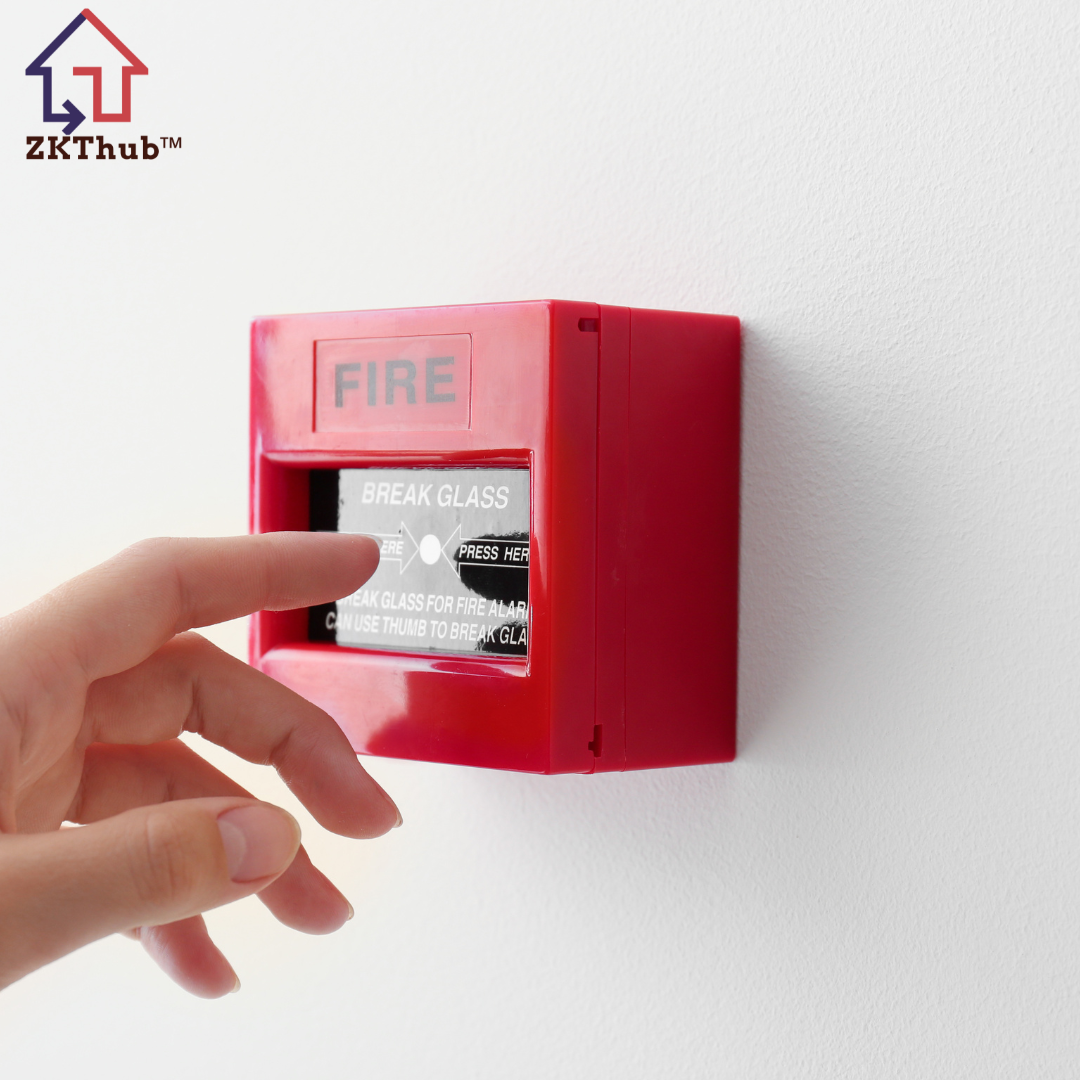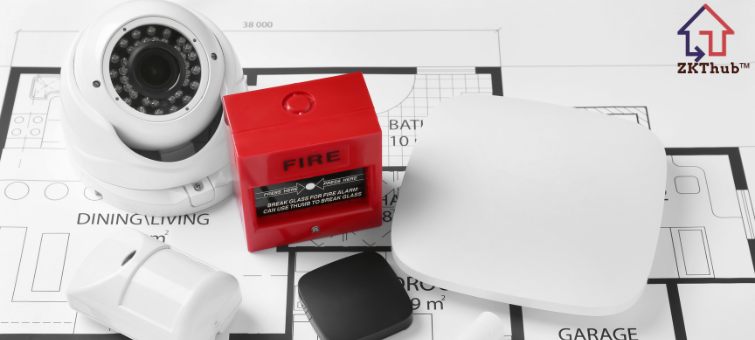Address
Shop No - 4, Near Kodathi Panchayath Office, Kodathi Village, Carmelaram Post, Ambalipura - Sarjapur Road, Bengaluru - 560035Call Us
093802 15771
Fire Alarm System
Fire alarm technology will keep your family safe, no matter what happens
A Fire Alarm System is an essential safety mechanism designed to detect and alert occupants to the presence of smoke, fire, or carbon monoxide in a building. These systems are critical for ensuring the safety of individuals and property by providing early warnings that can prevent loss of life and minimize damage.
The basic components of a fire alarm system include detectors, control panels, and alert devices. Detectors come in various types, such as smoke detectors, heat detectors, and carbon monoxide detectors. Smoke detectors can be further classified into ionization and photoelectric detectors. Ionization detectors are sensitive to small smoke particles, typically produced by flaming fires, while photoelectric detectors respond to larger smoke particles, usually from smoldering fires. Heat detectors activate when they sense a rapid increase in temperature or a temperature that exceeds a predetermined threshold. Carbon monoxide detectors identify the presence of this colorless, odorless gas, which is a byproduct of combustion and can be deadly in high concentrations.
The control panel acts as the system’s brain, receiving signals from the detectors and triggering the alarm. It monitors the integrity of the system, checking for faults or disconnections in the wiring and ensuring the system is ready to respond in case of an emergency. Modern control panels can be connected to building management systems and can be programmed to perform a variety of functions, such as activating sprinkler systems, shutting down HVAC systems to prevent the spread of smoke, and notifying emergency services.
Alert devices include sirens, strobe lights, and speakers, which are designed to warn occupants of the danger. These devices are strategically placed throughout a building to ensure that the alarm can be heard and seen by everyone, even in noisy or visually obstructed areas.
Fire alarm systems can also be integrated with other safety systems, such as sprinklers and emergency lighting, to provide a comprehensive approach to fire safety. Advanced systems offer features like voice evacuation messages, which provide clear instructions to occupants during an emergency, and remote monitoring capabilities, allowing building managers and emergency services to receive real-time information about the status of the system.

What is a Fire Alarm System?
- Crime prevention
- Industrial processes
- Traffic monitoring
- Transport safety
- Sporting events
- Monitor Employees
- Institutions
- Criminal use
- Home security
A Fire Alarm System is a crucial safety mechanism designed to detect the presence of smoke, fire, or carbon monoxide in a building and alert occupants to the danger. It consists of various components, including detectors, control panels, and alert devices such as sirens and strobe lights. These systems provide early warnings, enabling timely evacuation and emergency response, thereby helping to protect lives and property from fire-related hazards. Advanced fire alarm systems can also integrate with other safety systems like sprinklers and emergency lighting, offering a comprehensive approach to fire safety. Regular maintenance and testing of these systems are essential to ensure their effectiveness in an emergency.

Details of Accessories
Accessories for a Fire Alarm System enhance its functionality and reliability, ensuring optimal performance. Key accessories include:
- Detectors: These include smoke detectors (ionization and photoelectric), heat detectors, and carbon monoxide detectors. Each type is designed to detect different fire signatures, such as smoke particles, rapid temperature increases, or dangerous gas levels.
- Control Panels: The brain of the fire alarm system, control panels receive signals from detectors and trigger alarms. They can also monitor system integrity, manage notifications, and interface with building management systems.
- Alert Devices: Sirens, strobe lights, and speakers are used to alert occupants of a fire. These devices are strategically placed to ensure they can be heard and seen throughout the building, even in noisy or visually obstructed areas.
- Manual Call Points: Also known as pull stations or break glass units, these allow occupants to manually trigger the fire alarm system in case of an emergency.
- Power Supplies: Backup power supplies, including batteries and power generators, ensure that the fire alarm system remains operational during power outages.
- Cables and Wiring: High-quality, fire-resistant cables and wiring are essential for connecting all components of the fire alarm system, ensuring reliable communication between detectors, control panels, and alert devices.
- Enclosures: Protective enclosures for detectors and control panels safeguard these components from environmental factors, tampering, and damage.
- Relay Modules: These modules interface with other building systems, such as HVAC, elevators, and access control, to manage their operation during a fire event, helping to contain the spread of smoke and fire.
- Annunciators: Remote annunciator panels provide status updates and control options for the fire alarm system from various locations within the building.
- Voice Evacuation Systems: These systems deliver clear, pre-recorded or live voice messages to guide occupants during an evacuation, enhancing safety and order.
These accessories work together to create a comprehensive and reliable fire alarm system, ensuring early detection, effective alerts, and coordinated responses to fire emergencies.
